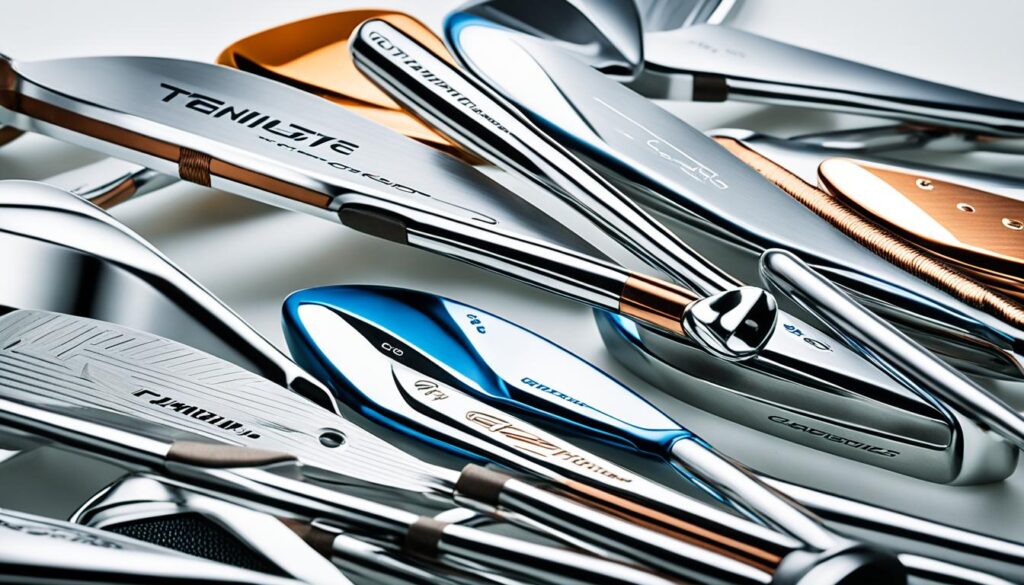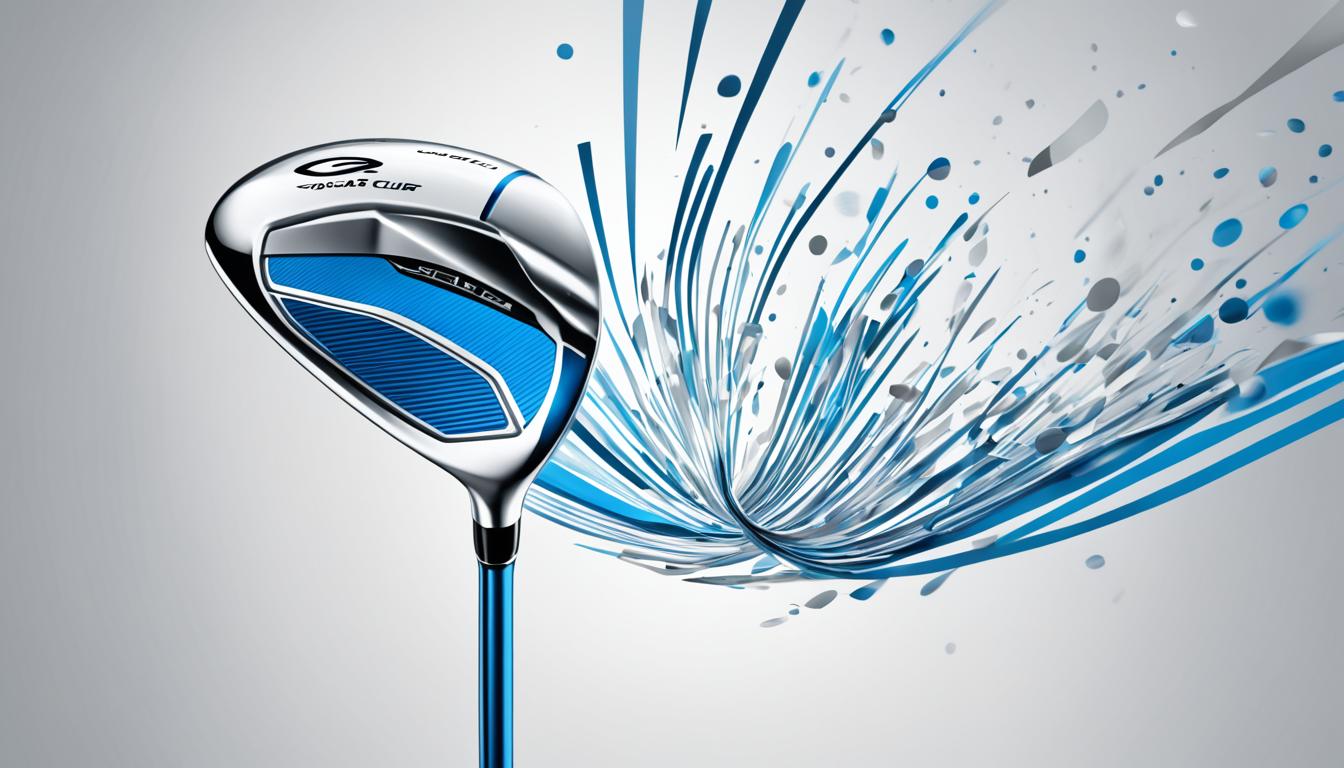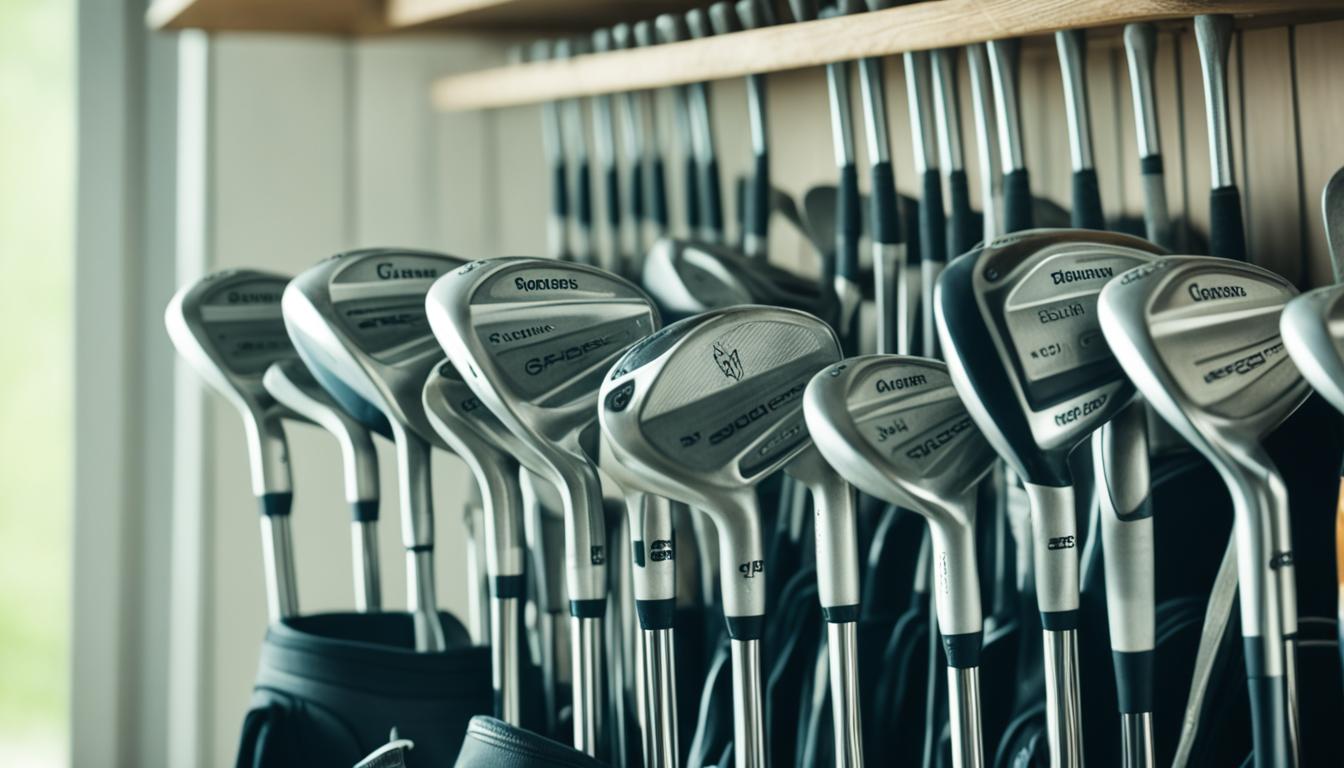Welcome to our exploration of the fascinating science behind golf club design. As avid golfers, we understand the importance of having the right equipment to enhance our performance on the course. Golf club design is an intricate balance of engineering, materials, and customization techniques that contribute to the overall performance of the club. In this article, we will delve into the intricacies of golf club engineering, analyze the impact of materials on club performance, and uncover the innovative techniques used to fit clubs to individual players. By understanding the science behind golf club design, you can make informed decisions to optimize your game.
Key Takeaways:
- Golf club design is a blend of engineering, materials, and customization techniques.
- The choice of materials in golf club construction can greatly impact performance.
- Understanding the science behind club fitting techniques is crucial for optimizing performance.
- Golf club design is constantly evolving to improve the player’s game.
- The right combination of design features and materials contributes to the overall performance of a golf club.
A Short History of Golf Club Design
Golf clubs have been an integral part of the game of golf for centuries. However, it wasn’t until the 16th century that the modern game of golf began to take shape. During this time, early golfers used wooden clubs that were simple in design and not very effective in terms of performance.
Wooden golf clubs, also known as “persimmons,” were crafted from various types of hardwood, such as hickory or beech. These clubs had a long, slender shaft and a small, flat clubhead. While they certainly served their purpose in the early days of the game, they lacked the technological advancements and precision engineering that we see in modern golf clubs today.
However, as technology progressed, so did golf club design. The introduction of metal and composite materials revolutionized the game and allowed for significant improvements in club performance. Metal clubheads, made primarily of steel or titanium, offered increased durability and enhanced ball control. Composite materials, such as graphite, brought forth lighter and more flexible shafts, enabling golfers to achieve greater swing speeds.
“The evolution of golf club design has been driven by a desire to maximize performance on the course. With advancements in materials and manufacturing techniques, golf clubs have become more versatile, forgiving, and tailored to individual players’ needs.”
The Evolution of Golf Club Materials
The materials used in golf club construction have played a pivotal role in shaping the modern game. Today, golf clubs are made from a variety of materials, each offering unique characteristics that impact club performance. Let’s take a closer look at some of the materials commonly used in golf club design:
- Metal: Steel and titanium are widely utilized in clubhead construction due to their strength, durability, and ability to distribute weight effectively.
- Graphite: Graphite shafts are lighter than steel, providing increased swing speed and enhanced shot distance. They also offer improved vibration dampening and a more responsive feel.
- Composite Materials: Combinations of carbon fiber, titanium, and other materials are used to create clubheads that optimize weight distribution, forgiveness, and ball control.
This continuous evolution of materials has led to golf clubs that are more technologically advanced and capable of achieving greater performance on the course. Golf club manufacturers are constantly experimenting with new materials and manufacturing techniques to push the boundaries of what is possible in terms of performance and customization.
Next, we will explore the importance of materials in golf club design and how they impact various aspects of performance, including weight distribution, center of gravity, shaft flexibility, clubhead speed, and stability.
The Importance of Materials in Golf Club Design
The materials used in golf club construction play a crucial role in optimizing the performance of the club. The choice of materials affects various aspects of the club, such as weight distribution, center of gravity, shaft flexibility, clubhead speed, and stability.
One key factor affected by materials is weight distribution. Different materials have different densities, which can impact the distribution of weight throughout the club. This distribution affects how the club feels in the golfer’s hands and how it moves through the swing. By carefully selecting materials, golf club designers can achieve the desired balance and maneuverability for optimal performance.
Another important consideration is the center of gravity (CG) of the club. The CG location can influence how the club interacts with the golf ball during impact. Materials with different densities can help shift the CG, allowing for greater forgiveness or precision, depending on the golfer’s needs.
Shaft flexibility is also influenced by the materials used. Different materials offer varying levels of stiffness, which directly affects the control a golfer has over the clubhead and ultimately, the ball flight. By choosing the right materials for the shaft, golfers can achieve the ideal balance between power and control.
Clubhead speed is a critical factor in golf club performance, and materials can significantly impact this aspect. Lighter materials, such as graphite or carbon fiber composites, can reduce the weight of the clubhead, enabling golfers to swing faster and generate greater clubhead speed.
Clubhead stability is another crucial consideration influenced by materials. Higher stability helps golfers maintain control during the swing, resulting in more accurate shots. Advanced composite materials, like carbon fiber and titanium, can enhance clubhead stability while still providing the lightweight properties necessary for increased speed.
Manufacturers have also developed composite materials that combine the benefits of multiple materials. For example, carbon fiber frames with titanium faces offer a winning combination of speed and control. These composite materials allow designers to optimize different aspects of the club’s performance, providing golfers with clubs tailored to their unique swing characteristics.
Choosing the right materials is crucial in optimizing the performance of golf clubs. By leveraging the properties of different materials, golf club designers can create clubs that enhance weight distribution, center of gravity, shaft flexibility, clubhead speed, and clubhead stability, resulting in improved performance on the course.

| Material | Key Features |
|---|---|
| Metal | Durable, provides stability, and allows for precise weight distribution. Allows for the center of gravity to be adjusted. |
| Graphite | Lightweight, enhances clubhead speed, and provides greater flexibility in the shaft for increased distance. |
| Carbon Fiber | Offers a unique combination of strength and lightness, providing enhanced clubhead stability and improved swing speed. |
| Titanium | Lightweight and strong, allows for weight optimization, and provides excellent forgiveness on off-center hits. |
| Composite | Utilizes a blend of materials for optimal performance. Combines features such as strength, flexibility, and stability. |
The Basic Design Features of a Golf Club
The technology used in golf club design has revolutionized the performance and playability of these essential tools. Advanced computer-aided design (CAD) software allows designers to create 3D models of golf clubs, enabling them to test and refine their designs before manufacturing. This innovative technology has led to significant advancements in various aspects of golf club design, including clubhead technology, weight distribution, aerodynamics, clubhead size, shaft stiffness, and clubhead length.
One of the key elements of golf club design is clubhead technology. Today, clubheads are designed using advanced computational fluid dynamics (CFD) simulations to optimize their aerodynamics. This ensures that the clubhead can move efficiently through the air, minimizing drag and maximizing clubhead speed for increased distance.
Weight distribution is another critical consideration in golf club design. By strategically placing weight within the clubhead, designers can influence the club’s moment of inertia (MOI), which contributes to forgiveness on off-center hits. A higher MOI provides more stability, reducing twisting and helping golfers achieve more consistent ball strikes.
The size of the clubhead is also important. Modern clubheads are larger compared to their predecessors, offering a larger sweet spot for improved forgiveness. A larger sweet spot means that even mis-hits are more likely to achieve acceptable results in terms of distance and accuracy.
Shaft stiffness plays a significant role in golf club design, as it affects the overall feel and performance of the club. Golfers with different swing speeds and styles require varying levels of shaft stiffness to optimize their ball flight and control. Stiffer shafts are generally suitable for high swing speed players, providing more control and accuracy, while more flexible shafts are better suited for players with slower swing speeds, promoting distance and ball flight.
Lastly, clubhead length is optimized based on a player’s measurements, such as height and arm length. Finding the correct clubhead length ensures that a golfer can swing the club comfortably and consistently, resulting in improved performance.
In summary, the basic design features of a golf club encompass clubhead technology, weight distribution, aerodynamics, clubhead size, shaft stiffness, and clubhead length. The evolution of golf club design through advanced technology and research has resulted in clubs that offer enhanced performance, forgiveness, and customizability, empowering golfers to optimize their game on the course.
Conclusion
Understanding the science behind golf club technology is key to optimizing performance on the golf course. By delving into the intricate details of materials, design features, and different types of clubs, players can make informed decisions that will enhance their game and improve their scores.
Moreover, a deep understanding of golf ball technology is equally crucial for maximizing distance and control. Factors such as core design, dimple patterns, cover materials, compression, and specialty options can significantly impact a player’s ability to achieve the desired results. Staying updated on the advancements in both golf club and ball technology is essential to unlocking one’s true potential and elevating their game.
So, whether it’s the core design that affects the ball’s flight, the specific dimple patterns that optimize aerodynamics, or the compression and cover materials that impact feel and performance, having a well-rounded knowledge of the science behind these elements will empower golfers to make the right choices for their game.
Ultimately, it’s this comprehensive understanding of the science of golf club technology, combined with knowledge of golf ball technology, that allows players to optimize their performance and take their golf game to new heights.
FAQ
How have golf clubs evolved over time?
Golf clubs have evolved from simple wooden designs to modern, technologically advanced clubs made from metal and composite materials.
What role do materials play in golf club performance?
The choice of materials impacts weight distribution, center of gravity, shaft flexibility, clubhead speed, and stability, all of which affect the performance of the club.
What technology is used in golf club design?
Designers use advanced computer-aided design (CAD) software to model clubs in 3D, allowing for testing, refinement, and optimization of clubhead aerodynamics, weight distribution, and materials.
How do different shaft stiffness options cater to players?
Shafts with various stiffness options cater to players with different swing speeds and styles, providing optimal control and performance.
How can understanding the science behind golf club design benefit players?
Understanding the science behind golf club design empowers players to select clubs that optimize their performance on the course, improving their scores and overall game.
What other golf technology should players be aware of?
Players should also consider the science behind golf ball technology, including core design, dimple patterns, cover materials, compression, and specialty options, to enhance distance and control.



